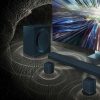While not for the faint of heart, components like the Acurus Muse 16-channel immersive media room processor are unquestionably necessary. Most of the people who will open their wallets for the state-of-the-art Acurus Muse already know exactly how it is going to be integrated into their dedicated home theater or multi-room audio system at home.
Some people might even use it in a commercial or marine environment with in-wall/in-ceiling speakers where space is limited but their expectations are sky high.
Acurus has been around the high-end audio space for a very long time, but it was its rebirth in the very capable hands of Indy Audio Labs that has made the brand not only relevant again — but a very serious player in the high-end home theater/multi-room category.
Acurus and Aragon are offering state-of-the-art products in 2021 and those of us old enough to remember the Aragon 4004 MKII power amplifier and Palladium II monoblocks, have to appreciate that both brands are back and flourishing.
There’s no such thing as “limitless” power in the world of power amplifiers but Acurus and Aragon have always delivered a sonic performance that feels that way.
I remember the first time I listened to an Aragon/Acurus setup in the 1980s driving a pair of Magnepan loudspeakers and having to lift my jaw off the carpet. Effortless in its delivery of music.
When I tried the Aragon 4004 MKII with an Audible Illusions pre-amplifier, I wasn’t sure that I had ever heard anything better in my audio journey at that juncture.
I’m sure there are some who will look at the Acurus Muse and wonder why someone needs to spend that kind of money on a processor when you could get support for the surround formats and 7-9 channels of power in a single AVR.
Fair enough. I’ll be blunt in a way that will probably upset a few manufacturers.
Having owned or tried almost 20 AVRs from Denon, Marantz, NAD, Anthem, Yamaha, and Onkyo over the past 20 years — the Muse/Theory Audio Design combination made them all sound quite ordinary.
The Acurus Muse is the Tampa Bay Lightning of A/V processors if we want to use a hockey analogy. Other teams thought they had a chance to dethrone the defending Stanley Cup champs but in the end — they could defeat you in so many different ways. The Muse is a very complex processor with enormous capabilities, but its ease of use and sound quality is just too much for the completion.
I’m a huge fan of the Anthem AVRs and consider them to be the best in terms of performance/price, but you need to upgrade to their best separates to match the Acurus Muse and the Theory Audio Design 5.2.2 system that I reviewed recently. Well over $10,000 just for the electronics to achieve similar results without any speaker system included.
If you’re building a dedicated home theater or integrating multi-room audio into your home — the Acurus Muse needs to be on your audition list.
The Muse
The Muse 16-channel immersive media room processor boasts 112 surround sound speaker layouts available to choose from, including 52 Dolby Atmos and DTS:X immersive speaker layouts — up to an amazing 15.1 configured immersive audio media room.

Setting up any of these layouts is a snap with the intuitive UI available both on the front panel and via a refreshingly simple-to-use mobile app. System integration and control is simplified through many 3rd party control solutions supported by the Muse.
The very compact Muse stands just 2RU tall but delivers a myriad of features and audio purity in a very easy to install frame that remains cool regardless of how hard you push it.
The Muse works with 3rd-party room tuning systems as well as Acurus’ own room correction technology, ASPEQT. The Muse is HDMI 2.0b (2.1 ready) and HDCP 2.2 compliant, offering the highest level of HDR support, and with ultra-fast audio format switching.
Acurus Muse Features:
- HDMI 2.0/HDCP 2.2 I/O
- natively decodes both Dolby Atmos and DTS:X
- mobile control app
- fully upgradeable
- 3rd party control drivers: Control4, Crestron, Elan, RTI, Savant, URC
- made in the USA
- 5-year warranty
Why it Works
My biggest complaint about A/V processors is that manufacturers have made them too complicated for end users to figure out; there are far too many features that consumers will never use and you’re often limited on the home automation side to only a few drivers.
Acurus has made the Muse compatible with most of the home automation and control platforms like Control4, Crestron, Elan, RTI, Savant, and URC which is a huge plus for Custom Installers.

If you’re looking to add a movie server, network audio player, UHD 4K player, and other legacy devices, the Acurus Muse is capable of handling all of those sources and more.
There are 8 HDMI 2.0b (2.1 ready) inputs with 4K pass-thru, and 2 HDMI 2.0b outputs (only one is 2.1 ready).
I do wish that there was at least one USB digital input but users will have to settle for 2 Coaxial and 2 Toslink Optical digital inputs. Not a deal breaker at all but just be aware.
As far as decoding and post-processing of audio formats is concerned, the Muse offers 15.1 channels of native Dolby Atmos decoding, 11.1 channels of native DTS:X decoding, Dolby Surround Upmixer, DTS: Neutral X Upmixer, PEQ loudspeaker adjustments, and its own ASPEQT room correction software.
For the purposes of the review, I used the Acurus Muse with the Theory Audio Design ALC-1809 Amplified Loudspeaker Controller which powered the rest of the system and was used to set all of the delays.
The Acurus Muse was used as a hub for my sources (Panasonic UHD 4K player, Roku Ultra Steamer, Bluesound Node 2i network player, Thorens TD-145 turntable, Apple TV 4K, Apple MacBook Pro, and Oppo BDP-103 3D Blu-ray player) and to provide surround format support which is not offered in the TAD ALC-1809.
I do wish that I had multi-channel amplifiers on-hand for this review but things did not work out that way.

The Sound
I can’t speak for how the Acurus Muse sounds with other amplifiers but my experience with the Theory Audio Design 5.2.2 system conveyed a number of differences between itself and other high-end AVRs ($3,000+) that I’ve tried in my home theater.
The Muse might look intimidating from its marketing materials, but I found it to be rather intuitive as far as navigation and setup are concerned. Because of what was connected on the other end, I didn’t have to use its room correction, or delay settings — but I did find that it provided a seamless way to connect 7 sources and that there was no lag when I switched on the fly.
It’s definitely not a “set-and-forget” component and you really do need to read the documentation and learn your way around the control app.
I’ll be the first to admit that I find AVR and processor setup somewhat frustrating as you often need to go into your video sources and make setting changes so that they pass a signal without issue.
Having spent considerable time calibrating my projector and LG OLED HDTV for each video source, I rather loathe having to make any further adjustments so that Dolby Vision or HDR work.
Installers get paid a lot of money to do this work for good reason and the end user only wants their system to work reliably and with the best possible performance.
The Muse isn’t very hard to use once you have it setup and I rarely had to touch it once the TAD ALC-1809 was in control of the system.
The compatibility between the two controllers was rather evident and goes a long way to explain why I was so impressed with the TAD 5.2.2 system.
I think where the Acurus Muse puts some daylight between itself and other processors is in its sense of scale and clarity; and I know that the speakers on the other end have a lot to do with that.
The Theory Audio Design 5.2.2 system is capable of delivering the dynamic range of both movies and music on a completely different level compared to most home theater systems below $20,000.
During the COVID lockdowns in New Jersey, I had a lot more free time to watch movies and we took advantage of it as a family when they kids were not learning remotely. It wasn’t just that everything had a greater sense of scale or dynamic range — one could hear far more detail and the sense of space was in a different league altogether.
We’re a huge Star Wars family and we did watch almost everything (minus the Wookiee Christmas Special) including the Mandalorian, Rebels, Clone Wars, Solo, and Rogue One through the Muse/TAD system.
My children picked up on the differences between the Muse/TAD 5.2.2. system and our NAD/Klipsch HT system from the onset.
Greater scale, tighter bass, clearer sounding dialogue, much larger sounding soundstage, and another level of dynamic range that made our basement home theater room sound far closer to a real movie theater than anything I’ve had here for the past 15 years.
Spending $20,000 on the Acurus Muse/Theory Audio Design 5.2.2 system is a frightening amount of money; especially for a family with college tuition, Yeshiva bills, and a downturn in household income because of the pandemic.

Does the Acurus Muse justify its $6,499 asking price?
In the context of the Theory Audio Design 5.2.2 system — it has to be considered an essential part of the puzzle.
Until I try it again with some Acurus or Aragon power amplifiers and my own speakers, I really can’t say how my opinion would change from what I’ve already experienced.
But if I were in the position to build a state-of-the-art home theater system and desire to add 2 more rooms to the system with multi-channel amplifiers, the Acurus Muse would be the first component I purchased. I don’t think I would ever need anything better to satisfy my movie obsession.
For more information: Acurus Muse

































Manbat
September 19, 2021 at 12:47 pm
Fascinating- great review and look forward to how this compares with Trinov Altitude 16. Many thanks from Oz.
Ian White
September 19, 2021 at 1:49 pm
It’s a very interesting product from a brand that finally has the right ownership. Acurus and Aragon are making amazing products right now.
If they ever release a new version of the Aragon 4004 MKII…my head will explode.
I’m curious to know how the Muse compares to really high-end processors like the Trinov as well.
Best,
Ian White